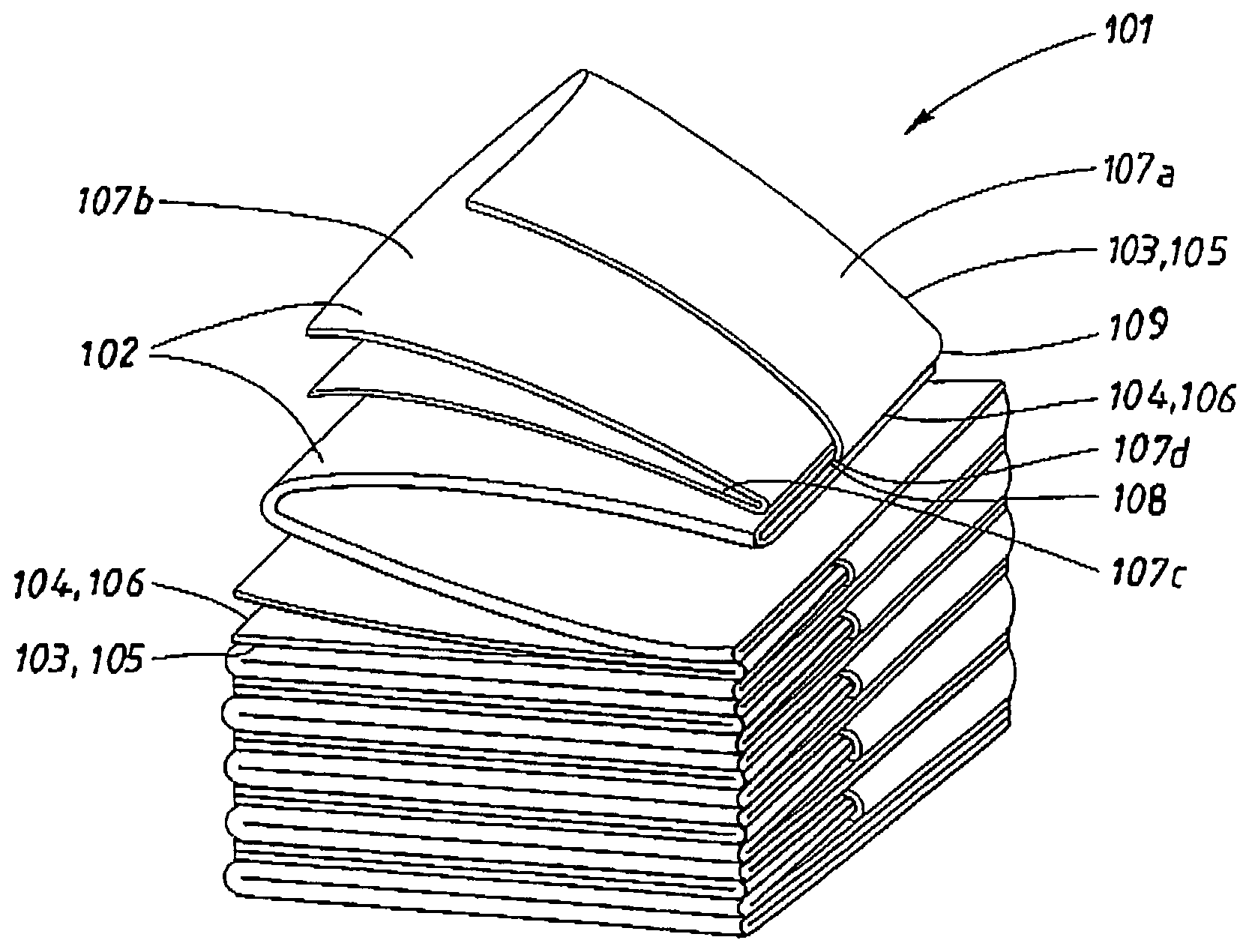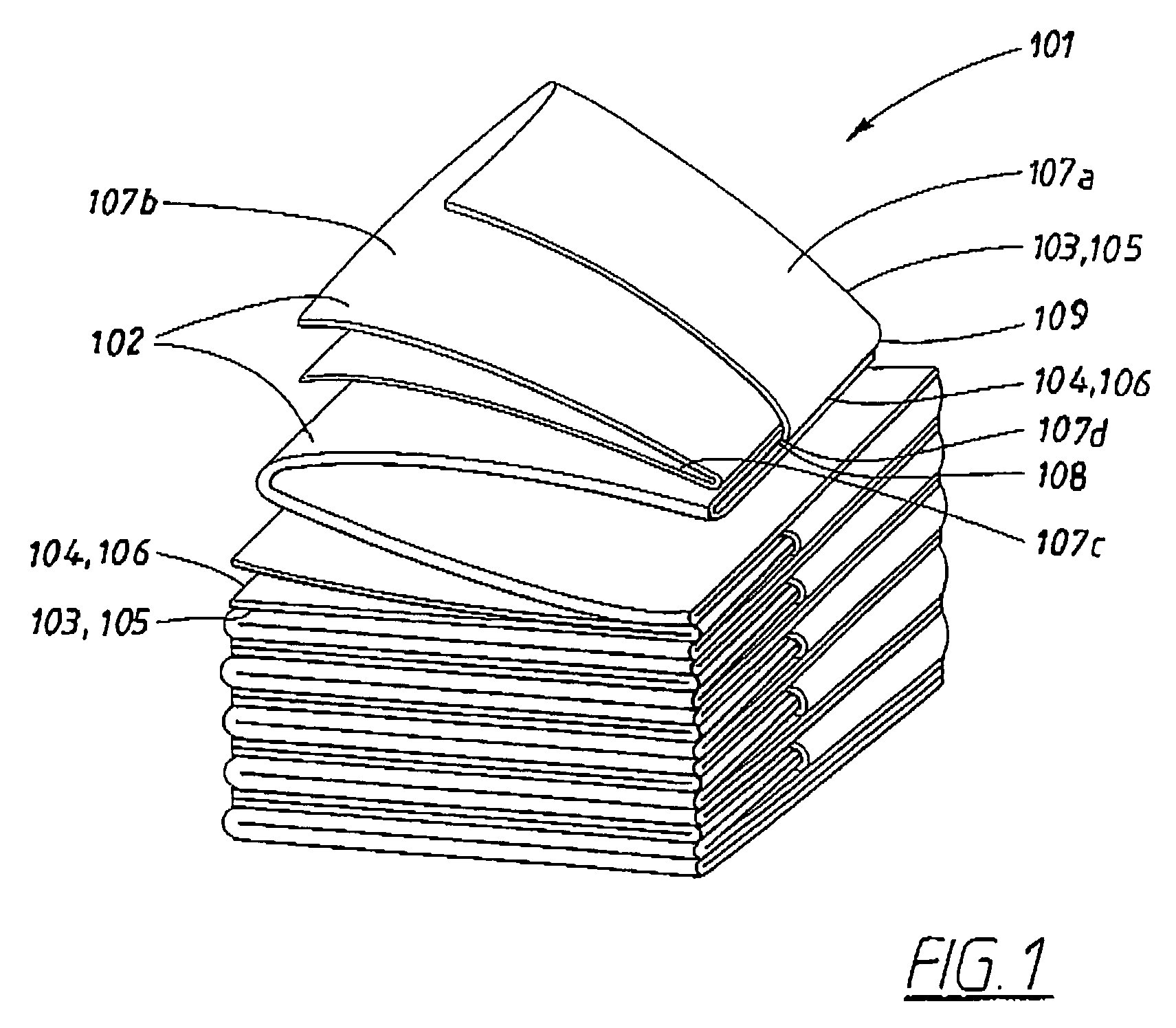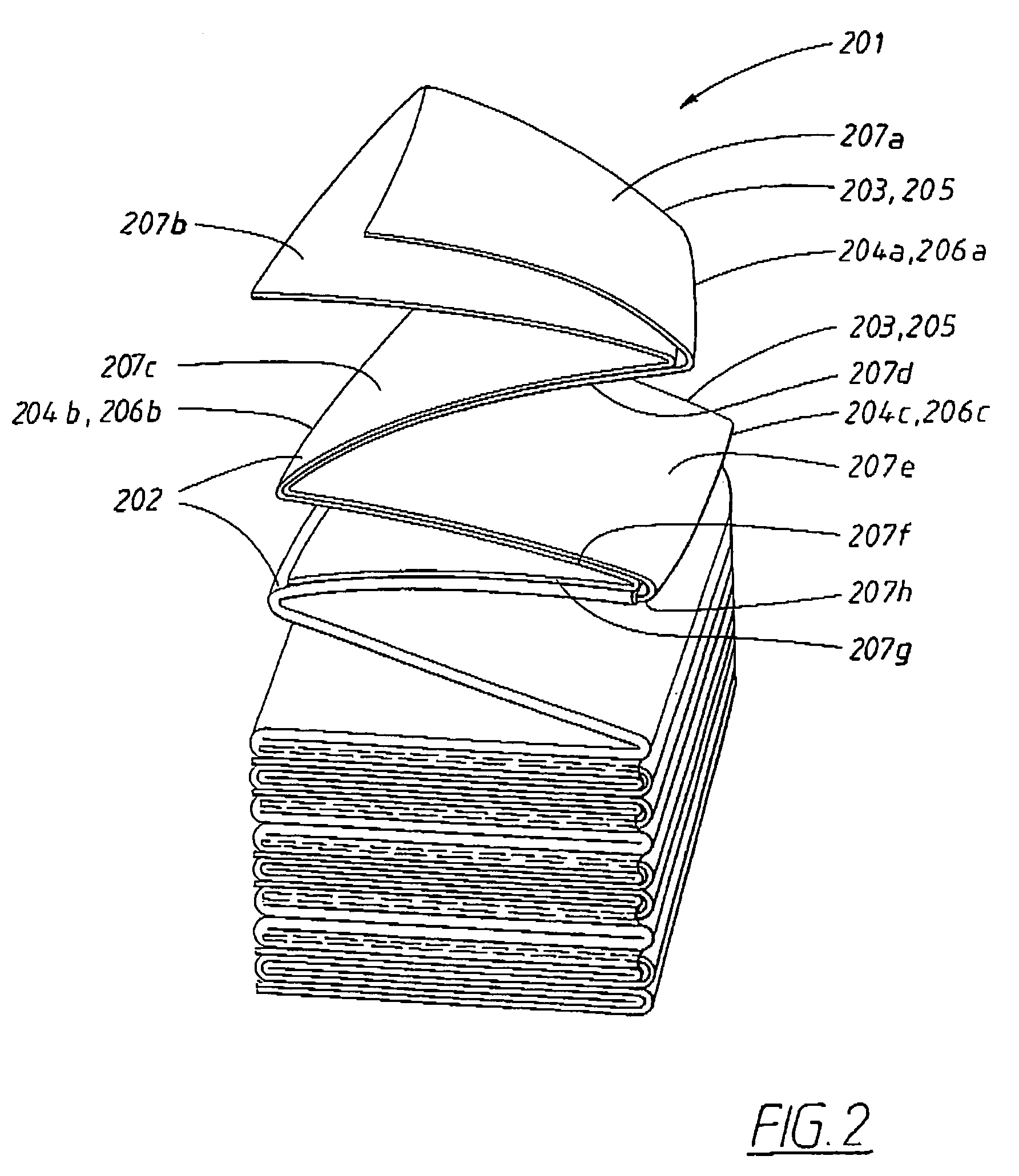Stack of interfolded material sheets and method for its production
- Summary
- Abstract
- Description
- Claims
- Application Information
AI Technical Summary
Benefits of technology
Problems solved by technology
Method used
Image
Examples
Embodiment Construction
[0052]FIG. 1 shows a stack101 of material sheets 102 according to one embodiment of the invention. Each individual material sheet 102 is folded on the one hand around a longitudinal folding line 103 and on the other hand around a transverse folding line 104, so that a longitudinal fold edge 105 and a transverse fold edge 106 are formed. Here, the longitudinal folding line 103, and thus the longitudinal fold edge 105, is displaced with regard to the longitudinal centre line of the material sheet 102. The folded material sheet therefore has four rectangles or panels 107a, b, c, d of different size, but panels 107a, d are essentially the same size and panels 107b, c are essentially the same size. As the first panel 107a does not overlap the whole surface area of the second panel 107b, the user can take hold of only the first panel 107a more easily. The uppermost material sheet will then, when the accompanying extraction from the stack of sheets 101 takes place, be unfolded completely, ...
PUM
| Property | Measurement | Unit |
|---|---|---|
| Length | aaaaa | aaaaa |
| Flexibility | aaaaa | aaaaa |
| Area | aaaaa | aaaaa |
Abstract
Description
Claims
Application Information
 Login to View More
Login to View More - R&D
- Intellectual Property
- Life Sciences
- Materials
- Tech Scout
- Unparalleled Data Quality
- Higher Quality Content
- 60% Fewer Hallucinations
Browse by: Latest US Patents, China's latest patents, Technical Efficacy Thesaurus, Application Domain, Technology Topic, Popular Technical Reports.
© 2025 PatSnap. All rights reserved.Legal|Privacy policy|Modern Slavery Act Transparency Statement|Sitemap|About US| Contact US: help@patsnap.com



